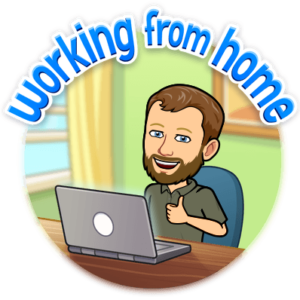#23ThingsEdUni Thing 5&6
Diversity
I do enjoy a good emoji, it brings another dimension to a chat message – introducing tone, reaction and feelings that can be misinterpreted when you are not in a face-to-face conversation. I have no problem if someone wants to identify themselves through an emoji and think it’s great that we now have that option. It makes sense to use a diverse representation of yourself, a bit like creating an avatar showing how you would like to be viewed. I myself stick to the Simpsons yellow when using emoji’s as I like to be neutral, plus if I wanted a face/reaction emoji to be a representation of me it would need to have a beard and be slightly rose cheeked. I have used bitmoji where I can create a better representation of myself. I do however reserve these for special messages to family and friends such as a ‘happy birthday’ or ‘congratulations’.
When it comes to equality and diversity, I think it should be highlighted more and that everyone should be treated as equal. I think it’s disgusting that even nowadays people are judged or treated differently on their sex, sexual orientation, upbringing, beliefs or skin tone. Things are getting better but there is always going to be someone that would treat someone differently, abuse power and even use diverse emoji’s to offend or disrespect others.

Accessibility
I have been thinking about accessibility a lot recently. I believe I’m more aware of accessibility and inclusion now as it affects more aspects of my job than it did before. In my previous position I looked after audio visual technology in the physical teaching spaces on campus. Here I only considered accessibility for hard of hearing and physically disabled users but now I understand more about accessibility needs for all. I think this is due to the nature of the job and moving to online working. I must make sure any content I post in blogs or when I publish user guides or information that they are accessible for all. Videos or audio recordings that I make should have closed captioning and transcripts available as well as any material used such as power point, PDFs or word documents.
I’ve also discovered tools I can use to help make content more accessible such as the accessibility checker within Microsoft, WebAIM contrast checker and WAVE the web accessibility evaluation tool. Now that I’m more aware of accessibility I include it in my training sessions that I run encouraging others to think more about accessibility and promote good practice.






Recent comments